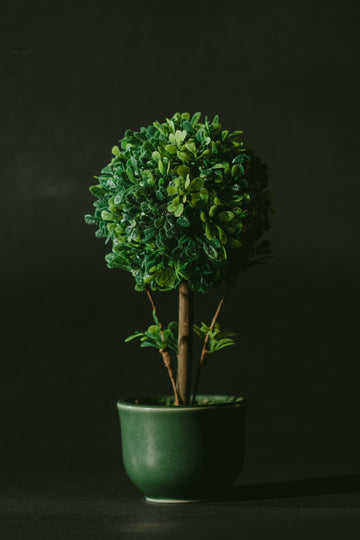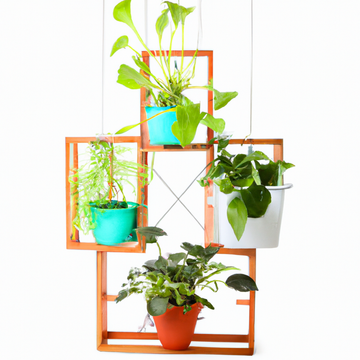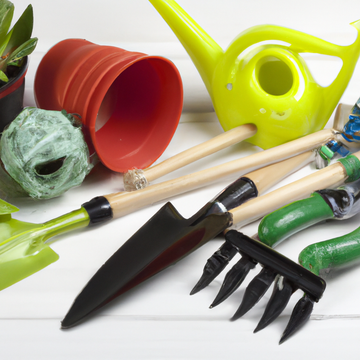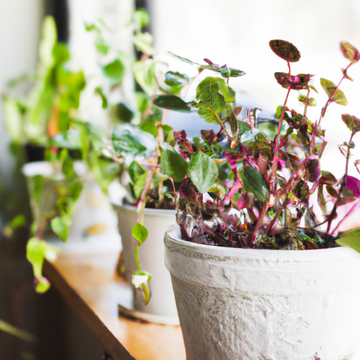
Are your houseplants looking a little lackluster lately? It might be time to consider repotting them! Repotting is an essential part of plant care that can help your plants thrive and grow. But where do you start? Don't worry, we've got you covered. In this blog post, we'll go over everything you need to know about repotting your plants, from why it's important to when and how to do it. Plus, we'll throw in some expert tips for making the process as smooth as possible. So grab your terracotta pots, grow bags or ceramic pots for plants because it's time to give those indoor planters some love!
Why You Should Repot Your Plants ?
There are many reasons why you should repot your plants. First and foremost, it helps to provide your plants with fresh soil and nutrients that they need to grow healthy and strong. Over time, the soil in your plant's pot can become depleted of essential minerals, which can lead to stunted growth or even death.
Another reason to repot is that it allows for better drainage. If you've noticed that your plant is sitting in a pool of water after watering, it could be a sign that the current pot isn't allowing enough drainage. Repotting into a larger container with proper drainage holes will ensure excess water doesn't accumulate around the roots.
Additionally, as plants grow, their root systems expand and require more space. Repotting gives them room to stretch out their roots and absorb necessary moisture from the soil.
Repotting also presents an opportunity to inspect your plant for any signs of disease or pests. By removing old soil and examining the roots closely before transferring them onto fresh dirt ensures an early diagnosis if there's something wrong with your plant.
All in all, regular repotting provides numerous benefits for both indoor and outdoor plants alike!
When to Repot Your Plants ?
Knowing when to repot your plants is crucial for their health and growth. The best time to repot depends on the type of plant, its age, and its size. As a general rule, most houseplants need to be repotted every 1-2 years.
One sign that it's time to repot is if you notice roots growing out of the bottom of the pot or emerging from the soil surface. This means your plant has outgrown its current container and needs more space for root development.
Another indicator is if water runs through the soil too quickly during watering, indicating that there are not enough roots in the current pot to absorb moisture.
You should also consider whether your plant has been recently stressed by disease or pests as this can impact its ability to thrive in its current container.
In addition, some plants may require a specific season for optimal transplanting success. For example, springtime is an ideal period for many flowering plants while fall works well with hardy perennials.
Ultimately, paying attention to signs like these will ensure that you're giving your beloved greenery all they need; including adequate space at precisely right times!
How to Repot Your Plants ?
When it comes to repotting your plants, there are a few things you should keep in mind. First off, choose the right pot for your plant. Terracotta pots are great for most plants because they allow air and moisture to pass through easily, while ceramic pots can hold onto moisture better making them ideal for succulent plants.
Next up is preparing the new pot. Add a layer of small rocks or gravel at the bottom of the pot to improve drainage and prevent water from sitting too long on the roots. Fill with fresh soil and create a well in the center for your plant.
Now it's time to remove your plant from its old pot. Gently loosen any tangled roots and carefully lift out of its previous container. Place into the new pot and backfill with additional soil as needed.
Give your newly repotted plant a good watering until excess water drains out of the bottom holes in the pot. And voila! Your plant is now happily settled into its new home with room to grow!
Tips for Repotting Your Plants
Repotting your plants can be a daunting task, but with the right tips and tricks, you can make it a success. Here are some helpful tips to keep in mind when repotting your plants.
Firstly, choose the right pot for your plant. Consider the size of your plant's root system and choose a pot that is slightly larger than its current one. Terracotta pots are great for plants that require good drainage while ceramic pots provide better insulation and humidity control.
Before repotting, water your plant thoroughly a day or two before as this will help reduce transplant shock. Gently remove the plant from its current pot by tapping on the sides of the container to loosen any roots attached to it.
When transferring your plant to its new pot, add fresh soil at the bottom before placing your plant inside. Fill remaining space with additional soil while gently pressing down around the edges until firm.
Give your newly potted plant enough water so it settles into its new home properly without drowning it in moisture. Repotting helps stimulate growth by providing more room for roots to expand and absorb nutrients efficiently.
With these simple tips in mind, you'll have no trouble giving all of those indoor garden favorites an upgrade!
Conclusion
Repotting your plants is an essential part of their care routine. It ensures that they have enough space to grow and thrive, and also prevents root-bound issues. By following the steps outlined in this article, you can successfully repot your plants using different types of containers such as terracotta pots, ceramic pots for plants or indoor planters. The process may seem daunting at first, but with practice and patience, it will become second nature to you.
Remember to select the right container size for each plant species according to its individual needs. Furthermore, be sure to choose a high-quality potting mix that provides adequate drainage while retaining moisture for healthy growth.
By caring for your plants properly through regular maintenance activities like repotting them when necessary, you can enjoy beautiful houseplants that bring a touch of nature indoors all year round!
Tags:




